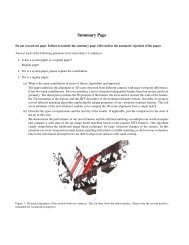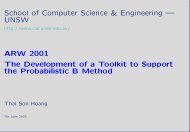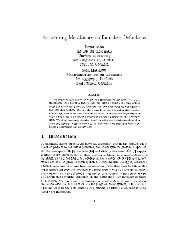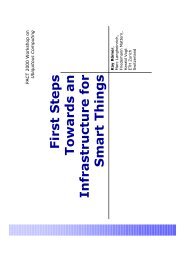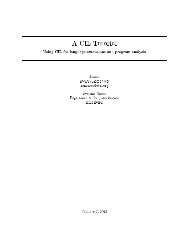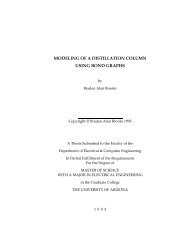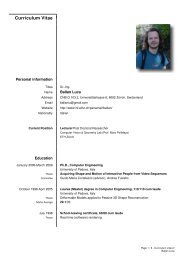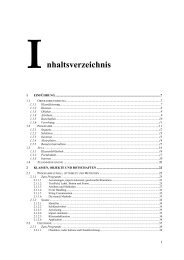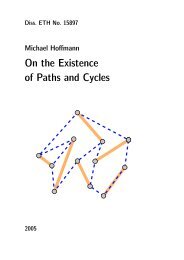Fast Robust Large-scale Mapping from Video and Internet Photo ...
Fast Robust Large-scale Mapping from Video and Internet Photo ...
Fast Robust Large-scale Mapping from Video and Internet Photo ...
Create successful ePaper yourself
Turn your PDF publications into a flip-book with our unique Google optimized e-Paper software.
Building image pyramids <strong>and</strong> tracking features are both highly parallel<br />
operations <strong>and</strong> so can be programmed efficiently on the graphics processor<br />
(GPU). Building an image pyramid is simply a series of convolution operations<br />
with Gaussian blur kernels followed by down sampling. Differential<br />
tracking can be implemented in parallel by assigning each feature to track to<br />
a separate processor. With typically on the order of 1024 features to track<br />
<strong>from</strong> frame to frame in a 1024x768 image we can achieve a great deal of<br />
parallelism in this way.<br />
One major limitation of st<strong>and</strong>ard KLT tracking is that it uses the absolute<br />
difference between the windows of pixels in two images to calculate<br />
the feature track update. When a large change in intensity occurs between<br />
frames this can cause the tracking to fail. This happens frequently in videos<br />
shot outdoors when the camera moves <strong>from</strong> light into shadow for example.<br />
Kim et al. in [62] developed a gain adaptive KLT tracker that measures<br />
the change in mean intensity of all the tracked features <strong>and</strong> compensates for<br />
this change in the KLT update equations. Estimating the gain can also be<br />
performed on the GPU at minimal additional cost in comparison to st<strong>and</strong>ard<br />
GPU KLT.<br />
4.1.2. <strong>Robust</strong> Pose Estimation<br />
The estimated local correspondences typically contain a significant portion<br />
of erroneous correspondences. To determine the correct camera position<br />
we apply a R<strong>and</strong>om Sample Consensus (RANSAC) algorithm [63] to estimate<br />
the relative camera motion through the essential matrix[20]. While<br />
being highly robust the RANSAC algorithm can also be computationally<br />
very expensive, with a runtime that is exponential in outlier ratio <strong>and</strong> model<br />
14



